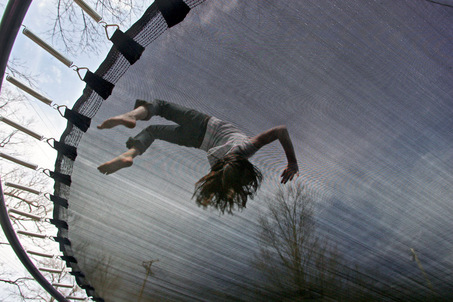Potential Energy
http://blog.mlive.com/kzgazette/2008/04/large_Trampoline2.jpg
Elastic
Potential Energy is
what is helping this person to get so much air, or height .
The springs that
the very stretchy fabric is connected to is going to take the brunt of the
force of this persons fall. If
you were to stretch a piece of the same like fabric across
two wooden horse and
jump on it, well that would not turn out so good because it
is the springs that
acquire the potential energy . Without the springs you would
just hit the
ground and well that would probably hurt.
Now if you were falling through the glass on the wooden saw
horses that would transfer all of your built up kinetic energy
into potential energy. Bad way to transfer.
When a spring is compressed a certain distance from it's natural length, the force is F=1/2kx^2. The letter "k" represents the springs constant and "x" represents the distance that the spring was stretched. To find the eleastic potential enrgy the following equation would apply.
PE=1/2kx^2
principle of conservation of energy
The idea that the total energy of the universe is conserved (it is neither created nor destroyed). The homogeneity of the universe with respect to time translations is a symmetry of nature. As a consequence of this symmetry, the universe's energy is conserved. For example, it is axiomatic for science that an experiment, prepared identically, will return the same result no matter when the experiment is performed.
Potential energy combind with Kinetic energy = Energy
Remember Energy can neither be created or destroyed.
| Home |
Potential Energy |
Forces
|
Equilibrium |
Kinetic Energy |
Bibliography |
